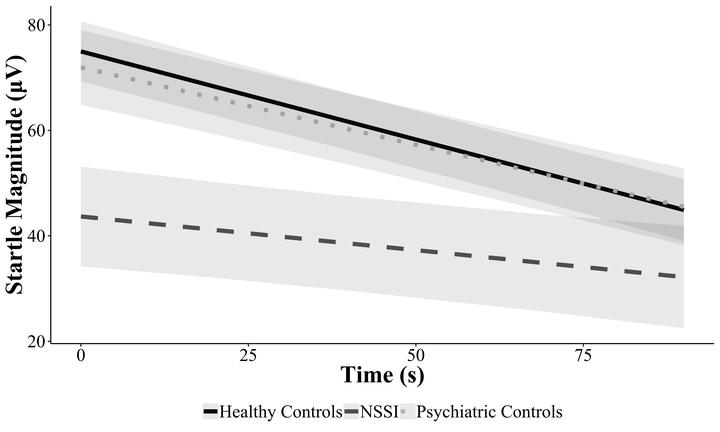The time course of responding to aversiveness in females with a history of non-suicidal self-injury

Abstract
Non-suicidal self-injury is a risk factor for suicidal behavior, particularly in females. Two prominent theories of suicide suggest that habituation to the psychophysiological aversiveness of NSSI is a mechanism by which NSSI exposure may lead to increased risk for suicide. Several laboratory studies examining the relationship between physiological habituation and suicide attempt history have yielded mixed results, potentially due to their use of broad measures of physiological arousal and/or focus on specific psychopathologies. However, no studies have examined the association between the time course (e.g., habituation, initial reactivity) of responding to aversiveness and NSSI, which may help to elucidate psychophysiological mechanisms of NSSI. Therefore, we examined habituation and initial reactivity to aversiveness (indexed by the time course of acoustic startle reflex, a well-validated measure of defensive responding) in three groups of young adult females – those with a history of NSSI, psychiatric controls matched on potential confounds (e.g., psychopathology, trauma history, demographics), and healthy controls. Results indicated that individuals with a history of NSSI exhibited blunted initial reactivity and marginally slower habituation to aversiveness relative to the two control groups. The NSSI group’s insensitivity to aversiveness may reflect prior psychophysiological habituation, and may be a mechanism through which prior NSSI exposure leads to increased risk for suicidal behavior.